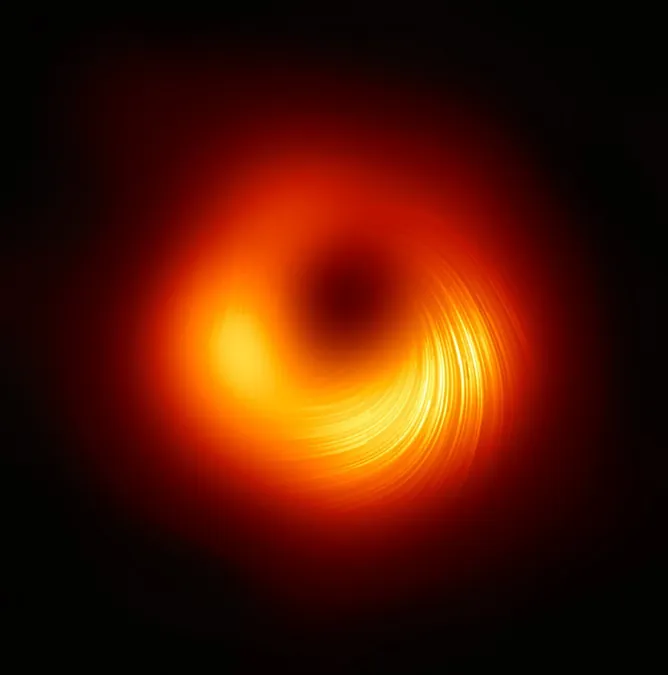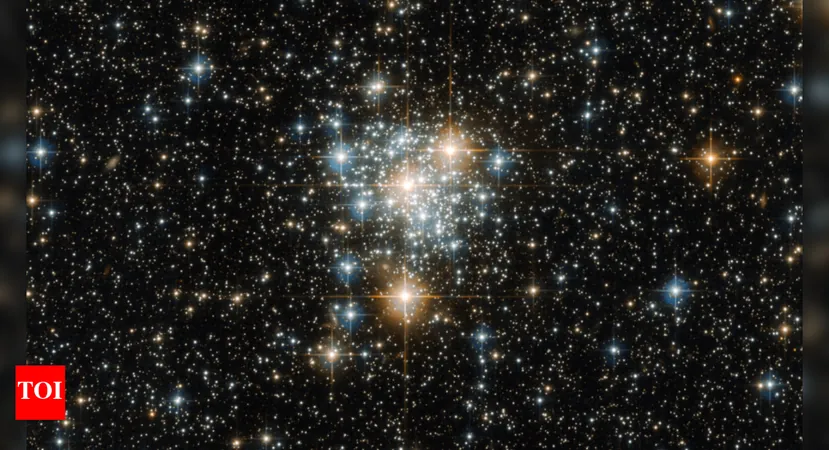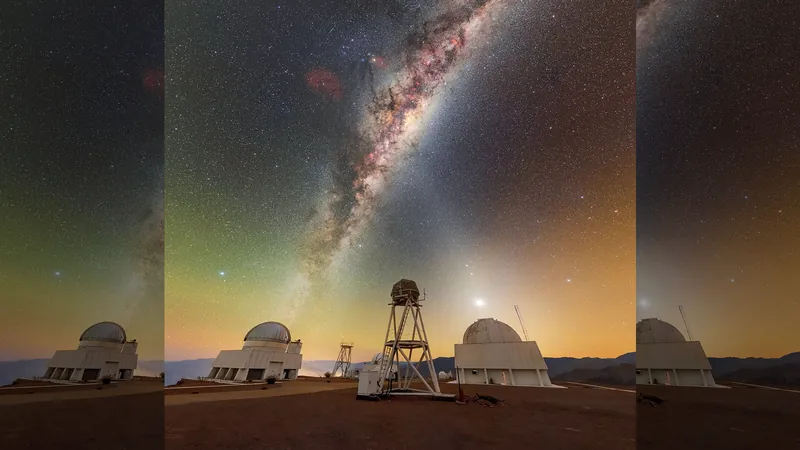
Unveiling the Secrets of M87's Supermassive Black Hole: A Spin Like No Other!
2025-06-10
Author: Sophie
Meet the Cosmic Beast at the Heart of M87
At the center of the galaxy M87 lurks a colossal black hole—a dazzling cosmic giant weighing in at a staggering 6.5 billion times the mass of our Sun. This behemoth was the very first target for the groundbreaking Event Horizon Telescope, and new measurements shed thrilling light on its astonishing capabilities.
Mind-Blowing Spin and Speed
Recent studies reveal that this monster is spinning at a jaw-dropping 80% of the universe's theoretical maximum speed! To grasp its ferocity, consider this: the inner edge of its accretion disk is rotating at about 14% the speed of light—equating to around 42 million meters per second. This isn't just an astronomical figure; it's a testament to the extreme physics at play.
The Science Behind the Glow
Research teams leveraged the iconic images from the Event Horizon Telescope to decode a mysterious "bright spot" in the black hole’s accretion disk. This glow springs from a phenomenon known as relativistic Doppler beaming, where material racing toward us appears significantly brighter than that moving away. By assessing this brightness disparity, scientists honed in on the black hole's dizzying rotation speed.
An Influx of Material and the Jet Connection
But wait, there's more! The magnetic field patterns surrounding the black hole offer clues to how material spirals inward, revealing that matter is plunging into its grasp at approximately 70 million meters per second—around 23% the speed of light. With this astonishing influx, the research estimates that M87's black hole is devouring between 0.00004 to 0.4 solar masses every year. While this may seem considerable, it's surprisingly tame for a black hole of its magnitude, operating well beneath the so-called 'Eddington limit'—indicating it’s in a relatively quiet phase.
Energy Output and Astounding Jets
Perhaps most fascinating is the link between the energy from the spiraling material and the powerhouse jets emanating from M87. These spectacular beams stream out at near-light speed, extending for thousands of light-years. This finding bolsters the theory that the black hole's feeding frenzy fuels these stunning jets.
A Leap Forward in Black Hole Research
Published in The Astrophysical Journal Letters, this study marks a pivotal advancement in our understanding of supermassive black holes. While earlier models suggested a spin range from 0.1 to 0.98, this new approach indicates a high spin rate of at least 0.8—possibly nearing the theoretical limit of 0.998.
The Future of Cosmic Exploration
As we await the arrival of more powerful telescopes and advanced imaging techniques, M87’s black hole will undoubtedly continue to serve as a critical testing ground for our grasp of gravity, spacetime, and the extreme conditions of the universe. Each new revelation inches us closer to resolving the profound mysteries of these cosmic titans and their impact on galaxy evolution and beyond.









 Brasil (PT)
Brasil (PT)
 Canada (EN)
Canada (EN)
 Chile (ES)
Chile (ES)
 Česko (CS)
Česko (CS)
 대한민국 (KO)
대한민국 (KO)
 España (ES)
España (ES)
 France (FR)
France (FR)
 Hong Kong (EN)
Hong Kong (EN)
 Italia (IT)
Italia (IT)
 日本 (JA)
日本 (JA)
 Magyarország (HU)
Magyarország (HU)
 Norge (NO)
Norge (NO)
 Polska (PL)
Polska (PL)
 Schweiz (DE)
Schweiz (DE)
 Singapore (EN)
Singapore (EN)
 Sverige (SV)
Sverige (SV)
 Suomi (FI)
Suomi (FI)
 Türkiye (TR)
Türkiye (TR)
 الإمارات العربية المتحدة (AR)
الإمارات العربية المتحدة (AR)